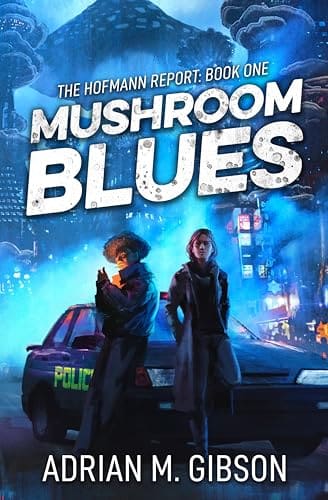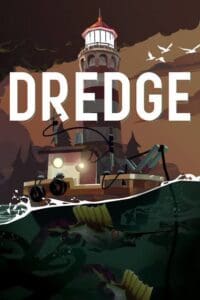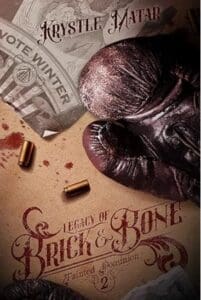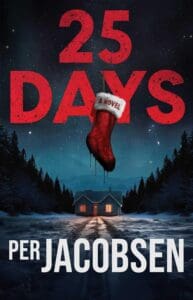
TL;DR Review: Engaging, fascinating, and set in a unique and riveting world. Strong characters and a compelling sci-fi detective noir story. A truly stunning debut.
Synopsis:
TWO YEARS AFTER a devastating defeat in the decade-long Spore War, the island nation of Hoppon and its capital city of Neo Kinoko are occupied by invading Coprinian forces. Its Fungal citizens are in dire straits, wracked by food shortages, poverty and an influx of war refugees. Even worse, the corrupt occupiers exploit their power, pushing the native populace toward the brink of civil unrest.
As a winter storm looms over the metropolis, NKPD Homicide Detective Henrietta Hofmann begrudgingly partners up with mushroom-headed patrol officer Koji Nameko to investigate the mysterious murders and disappearances of Fungal and half-breed children. Their investigation drags them deep into the seedy underbelly of a war-torn city, one brimming with colonizers, criminal gangs, racial division and moral decay.
In order to solve the case and unravel the truth, Hofmann must challenge her past and embrace Fungal ways. What she and Nameko uncover inthe midst of this frigid wasteland will chill them to the core, but will they make it through the storm alive?
Full Review:
When I first heard the term “fungalpunk”, I was very unsure of what to expect. Which, honestly, made me more excited to read this book. After all, there’s nothing I love more than a unique, never-before-done worldbuilding concept.
Let me tell you, NOTHING can prepare you for what you’re about to experience in the pages of Mushroom Blues. And I mean that in the best way possible.
From Page One, you’re immediately immersed in the world—a futuristic world that feels like the back alleys, grit, and grime of Altered Carbon, but heavily inspired by Japanese (and a bit of Chinese) culture, even with a language pleasingly similar to Japanese.
There’s just one (MAJOR) twist: the natives of this world are “fungals”, people who are essentially human-mushroom hybrids.
Neo-Kinoko, as the city is called, is a world of fungi in all its forms. From building materials (mycocrete) to clothing (mycofabric) to the food to the artwork, everything revolves around mushrooms. Towering over the entire city is this enormous mushroom that lends a brooding air and casts deep shadows that lean perfectly into the “noir” feel of the story.
Mushrooms are baked into the DNA of this book in every way, but it’s never clumsy or ham-fisted. Instead, while it starts out as being an object of curiosity, it becomes central to the plot and themes that are cleverly layered in and developed.
What I truly loved about this book was the growth (points to me for a mushroom pun!).
The main character, Henrietta Hoffman, NKPD detective and recovering alcoholic, is banished to Neo-Kinoko for past misdeeds (no spoilers), and immediately we see just how much she hates it. Not just the world, but the “gillies” (mushroom people) she’s condemned to live among. She is as racist as you would expect, and sees the people of the world with nothing but loathing.
But as the story goes on, we see that beginning to change. Piece by piece, chapter by chapter, her ingrained hatred for the natives of Neo-Kinoko is worn away, and we see her growing as a human being in every conceivable way.
There’s this lovely theme of “mushrooms always regrowing and repairing” that plays into every aspect of the story. The city of Neo-Kinoko was heavily bombed by the Coprinian military as they conquered it, and the signs of devastation and destruction are everywhere. But the city is slowly growing and repairing itself, as mushrooms tend to do, working toward restoring what was destroyed. And that exterior story is reflected in the emotional journey of Detective Hoffman. As her attitudes toward the people around her change, so, too, her attitudes toward herself and her own damage change. Her life reflects the regrowth and restoration around her. It’s done cleverly and subtly, with a deft hand that doesn’t hammer the theme home but weaves it masterfully into every scene.
Don’t get me wrong, this story had a whole lot of excitement, action, and detective-ing. There’s everything you expect—dismembered bodies washed up on abandoned beaches, car chases, gun fights, interrogations complete with the prerequisite “detective losing control”, muddling over case notes in the late night hours, the “whys” and “hows” and “wherefores” of a great mystery. Really, the investigation really serves as an entertaining plot vehicle to do amazing character work and paint for us a rivetingly unique world.
And this is where I’m blown away: this is Adrian M. Gibson’s debut novel. Reading it, you’d never know it! The story is expertly written—clearly by someone who has a deep understanding of and love for mushrooms, as well as a fascination with detective noir stories—and the world and characters are incredibly rich. This reads like the product of a savvy, experienced, and talented author, and it’s as familiar and comforting as it is unique.
Mushroom Blues is definitely one of the strangest books I’ve read so far this year, but also one of the strongest. A stunning debut that has made me an instant fan of this weird and imaginative yet cleverly conceived world and complex characters. A truly excellent addition to sci-fi literature!







Leave a Reply